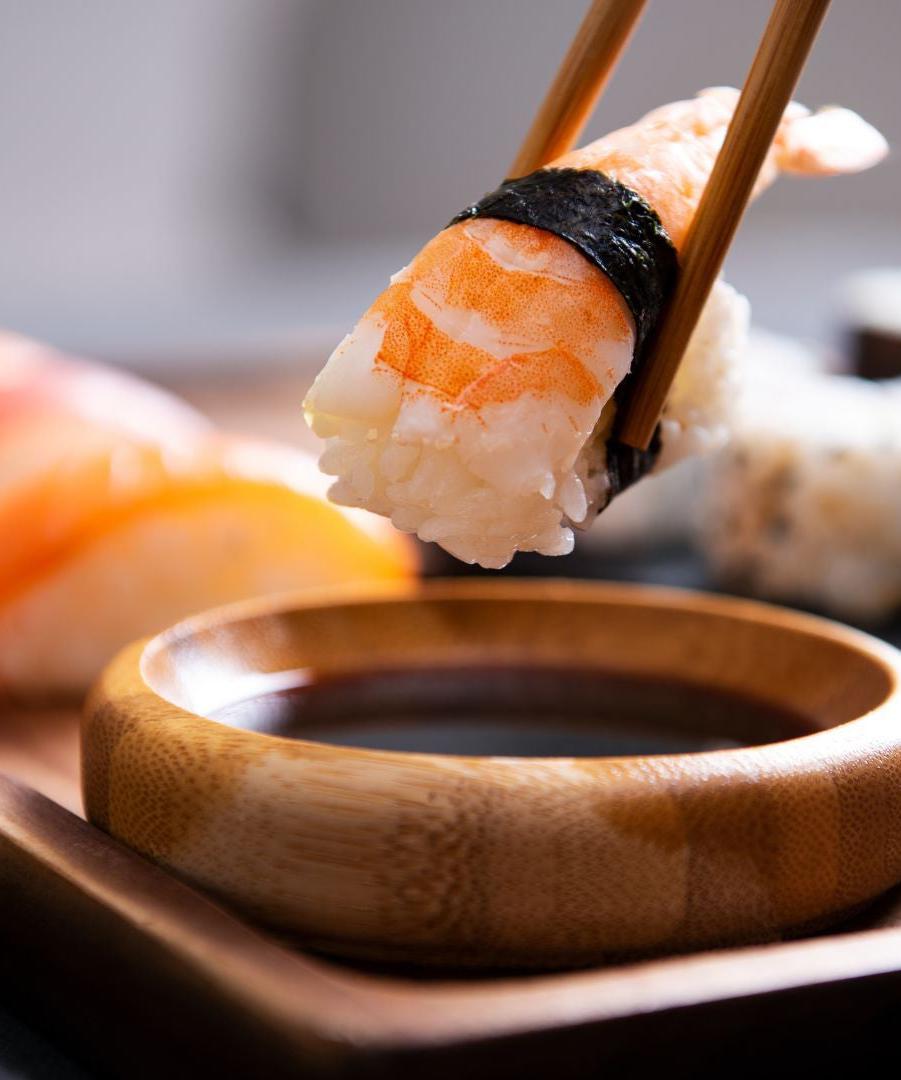In the warmth of a kitchen where a stew simmers, a lover of Asian cuisine seasons their creation with soy sauce. This ubiquitous ingredient, laden with umami, also bears a hidden concern: its sodium. While cherished for its umami, soy sauce brings with it a dash of debate due to its sodium content. Made from fermented soybeans and salt, its health implications are worth pondering. We’ll take a closer look at the intricate dance between its beloved flavor and the sodium it contains.
Sodium in Soy Sauce: A Balancing Act Sodium, often discussed in health circles, plays a pivotal role in soy sauce production. It’s more than a flavor enhancer; it acts as a preservative, helping soy sauce stay fresh longer. However, its presence in soy sauce is a topic of concern for health-conscious individuals.
Tracing the Origins of Soy Sauce Stepping back into ancient China, we discover the roots of soy sauce. Brewing soy sauce traditionally involved a lengthy fermentation process, combining soybeans, wheat, and a saltwater solution. As the technique traveled across Japan, Korea, and other Asian regions, each place added its unique touch. But, irrespective of the regional variations, sodium remained an essential ingredient.
Nutritional Profile of Soy Sauce
In the modern world, nutrition labels tell a story. A tablespoon of soy sauce can contain about 1,000 milligrams of sodium, startling those mindful of their salt intake. But there’s more to soy sauce than just sodium.
Breaking Down the Components
Apart from sodium, soy sauce contains amino acids, antioxidants, and trace elements. These contribute to its distinct taste and potential health benefits. The fermentation process, involving lactic acid and other microorganisms, adds layers of complexity to its profile.
Soy Sauce Varieties and Their Sodium Content
Soy sauce comes in various forms – light, dark, tamari, shoyu, and more. Each type, from the light soy sauce popular in Chinese cuisines to the dark, more robust koikuchi shoyu of Japan, differs in flavor, color, and, yes, sodium content. The choice of soy sauce can significantly impact the sodium in your dish.
Health Impacts of Sodium in Soy Sauce
Here we are, stirring this delicious stew, and it’s a good time to ponder about sodium in soy sauce.Now, sodium isn’t all bad – it’s pretty crucial for things like fluid balance and making sure our muscles and nerves work right. But on the flip side, if we go overboard, it can stir up some serious issues like high blood pressure and heart problems. And if you’re dealing with conditions like hypertension, it’s even more crucial to keep an eye on your sodium intake, soy sauce included. , particularly the heart. Excess sodium in the bloodstream can increase blood volume in blood vessels, leading to higher blood pressure. that the general population consume less than 2,300 milligrams of sodium per day. However, it’s noted that most people consume significantly more than this recommended amount.
Understanding Sodium and Health
It’s not just about cutting out sodium; it’s about understanding it.
Sodium, a component of table salt, plays a vital role in our physiology. It’s involved in various bodily functions, from fluid balance to nerve transmission.
Health experts recommend limiting sodium intake to less than 2,300 milligrams per day for healthy people. But with soy sauce being such a common ingredient in many dishes, from sushi to stir-fries, how do we balance flavor with health?
Soy Sauce in Culinary Traditions
Beyond being a simple condiment, soy sauce holds significant cultural value, particularly in Asian cuisines. From the lively streets of Southeast Asia to the serene sushi bars in Japan, it’s a staple. Western cuisine has also embraced soy sauce, using it to add depth to an array of dishes. While its use is widespread, it’s essential to be ware of the health implications of its sodium levels.
Alternative Low-Sodium Soy Sauces
In response to health concerns, the market has seen a rise in low-sodium soy sauce options.
Kikkoman’s low-sodium soy sauce is a solid choice for those keeping an eye on their salt intake. With about 40% less salt compared to the regular variety, it’s a savvy pick. This reduction is achieved through a special method that removes salt post-fermentation. This soy sauce still packs a punch of umami, making it a go-to for flavor without the salt overload. For anyone juggling dietary restrictions but not willing to compromise on taste, this might just be the ticket.
Reducing Sodium in Your Diet
In our quest for a healthier lifestyle, it’s crucial to consider our sodium intake. Soy sauce, a kitchen essential, comes in various types, each with a unique salt content. For instance, dark soy sauce might tempt you to pour generously, but moderation is key. A light drizzle, particularly of tamari soy sauce, can add that savory punch without piling on the sodium.
If you’re navigating food sensitivities or celiac disease, it’s worth exploring alternatives like white soy sauce. These options deliver flavor without the gluten often present in standard soy sauces. But keep an eye out – some Chinese soy sauces include MSG, a no-go for those sensitive to this additive.
Why not mix things up in the kitchen? Combine soy sauce with low-sodium ingredients for marinades or dressings. This trick lets you relish the distinctive taste of soy sauce, a staple in Asian cooking, without the sodium spike. And when it comes to tofu or sashimi, remember: a little can go a long way.
Balance is essential in cooking and in life. Whether you’re choosing between soy sauce varieties or experimenting with spices like ginger and garlic, your goal is to craft dishes that are as kind to your health as they are delightful to your palate. Keep tabs on the type of soy sauce you’re using and its sodium content for a more enjoyable, health-conscious culinary experience.
The Role of Fermentation in Soy Sauce Production
Fermentation is at the heart of soy sauce production, influencing both its flavor and sodium content.
Traditional vs. Modern Brewing Methods
Traditional brewing methods, often involving months to years of fermentation, result in a complex flavor profile. Modern methods might use acid hydrolysis, speeding up the process but potentially altering the taste and nutritional qualities.
Impact on Sodium Content and Flavor
Regardless of the method, sodium remains a key ingredient. However, traditional fermentation can result in a more balanced flavor, reducing the need for additional salt in cooking.
The Link Between Soy Sauce and Health Conditions
The sodium in soy sauce can impact various health conditions.
High sodium intake is a known risk factor for hypertension and heart disease. Those with these conditions should be particularly mindful of their soy sauce consumption.
The kidneys regulate sodium levels in the body. High sodium intake can strain these organs, especially in individuals with kidney-related health issues.
Consumer Awareness: Reading Labels and Sodium Content
Being an informed consumer is key to managing sodium intake.
Understanding nutrition labels on soy sauce bottles can help you make better choices. Look for key information like “milligrams of sodium” per serving.
Besides soy sauce, be aware of other high-sodium products in your diet. Processed foods, certain condiments, and snacks often have hidden sodium.
Cooking Tips for Using Soy Sauce
When cooking with soy sauce, remember: less is more. A few dashes can deepen the flavor of stir-fries or sushi, sure, but why stop there? Get creative! A splash in your soup or a drizzle on roasted veggies? Now we’re talking. If you’re watching your sodium, try a low-sodium variety and maybe mix it up with some tangy citrus or sharp vinegar. But hey, don’t go overboard. Soy sauce is strong stuff, and too much can turn your culinary masterpiece into a salty mess. So use it with a light hand, and let those other flavors shine through too. Your taste buds (and your heart) will thank you.
The Future of Soy Sauce: Trends and Innovations
The soy sauce industry is evolving, keeping pace with a world that’s more aware of what goes on their plate. It’s all about striking that perfect balance: giving people the taste they crave with a healthier twist. Enter low-sodium soy sauce – it’s kind of a big deal in this transformation. This isn’t just cutting down on salt; it’s about keeping that classic soy sauce flavor that’s a staple in many kitchens.
Now, let’s talk about where this is really catching on. In the U.S., people are tuning in more to what they eat and the impact it has on their health. Heart health, blood pressure – you know the drill. So, this low-sodium option? It’s not just a nice-to-have, it’s becoming a must-have. Europe’s in on this too. They’ve always had a thing for natural, healthier choices, and this new soy sauce fits right into that lifestyle.
But in Asia-Pacific, the birthplace of soy sauce, the story’s got a twist. It’s a balancing act – keeping the traditional taste while dialing down the sodium. Tough, sure, but they’re making it happen.
So, what’s the bottom line? The world of soy sauce is getting a healthy makeover, but taste isn’t taking a backseat. Be it in a lively American city, a quaint European village, or a bustling Asian street market, low-sodium soy sauce is riding the wave. The key to winning hearts? Keeping that authentic flavor intact.
FAQs about Sodium in Soy Sauce
Addressing common questions can help demystify sodium in soy sauce.
How much sodium is typically found in a tablespoon of soy sauce?
When it comes to soy sauce, a single tablespoon packs a substantial sodium punch, typically around 900 to 1,100 milligrams. This hefty dose stems from both its traditional brewing methods and the addition of salt for preservation and taste enhancement. However, it’s worth noting the sodium can vary across different varieties like light, dark, or low-sodium. So, if you’re keeping an eye on your sodium intake, it’s wise to scrutinize the nutritional details on the bottle.
Does Fermentation Affect Soy Sauce’s Sodium?
While soy sauce undergoes a complex fermentation process involving molds, yeast, and bacteria breaking down soybeans and wheat, this doesn’t really tweak its sodium levels. The main sodium source in soy sauce comes from the salt used in its brewing. This salt plays a key role – it manages the fermentation, keeps harmful microbes at bay, and adds that signature flavor. Since the sodium is added early on and stays consistent, the fermentation duration or style doesn’t really shift the sodium content in the finished product.
What are some tips for cooking with soy sauce to minimize sodium without losing flavor?
If you’re trying to keep your sodium levels in check but still want that soy sauce zing in your dishes, here are some tips:
1. Go for low-sodium soy sauce, which can slash the sodium content by 40-50% compared to the regular version.
2. No low-sodium sauce? No problem. Just water down your regular soy sauce with some water or broth.
3. Amp up your dish’s flavor with other ingredients like garlic, ginger, sesame oil, or rice vinegar, so you can cut back on the soy sauce.
4. Instead of free-pouring, measure your soy sauce with a spoon for better control.
5. Add soy sauce towards the end of cooking to maintain its flavor, letting you use less but still getting that taste you’re after.
6. Get creative and try other umami-rich, low-sodium options like miso paste, which offers a similar savory depth.
Conclusion: Balancing Health with Flavor
Soy sauce adds a distinct flavor to meals, but be aware of the sodium intake is crucial. You can still savor its flavor by choosing low-sodium options and using it in moderation if you are not willing to sacrificethe umami It’s all about finding the right balance between taste and health. Always remember the balance.




